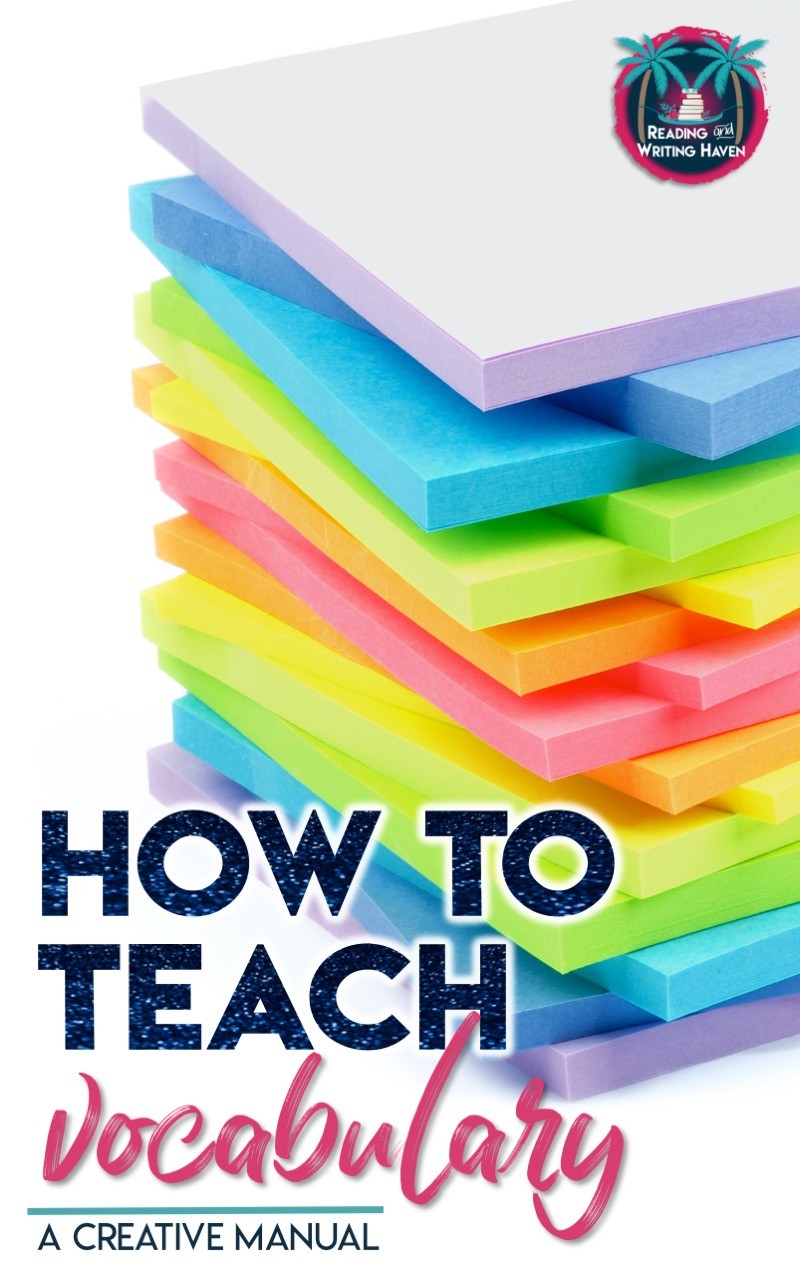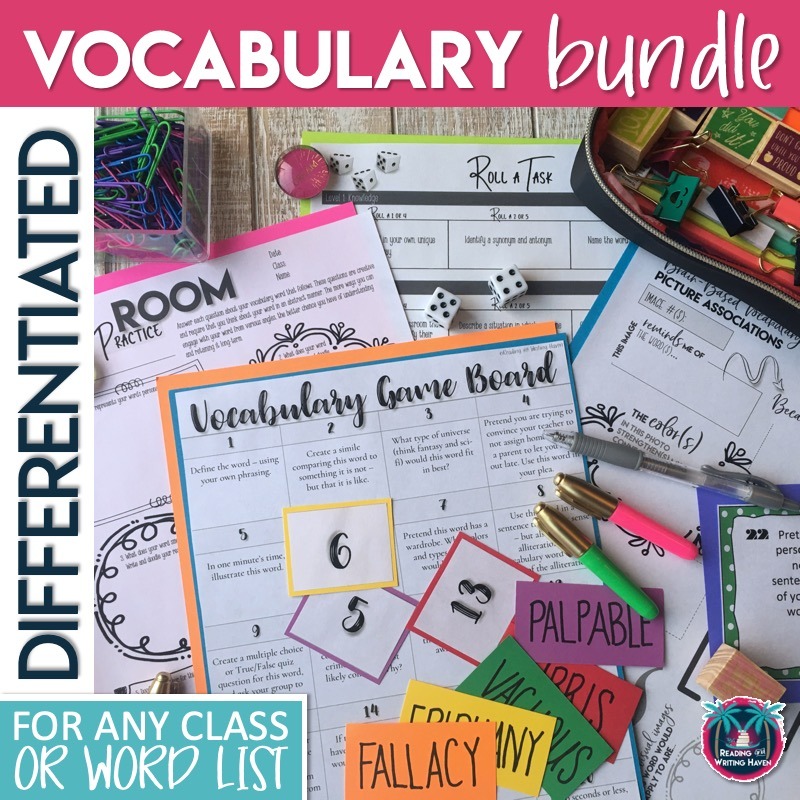How to Teach Vocabulary in Secondary Classrooms
So you want to upgrade your vocabulary game. This time, you’re serious. You’re done with the worksheets and memorization games that leave both you and students desiring more. Where should you begin? Keep reading. I’ve got plenty of unique ideas for how to teach vocabulary in secondary classrooms (meaningfully and effectively).
These blog posts should help you to create a program you are proud of — one you love! Vocabulary is one of my favorite topics to teach, but it has taken me a while to get comfortable with it.
I hope that you find some helpful strategies, activities, and tips to increase student learning in this collection of articles.
How to Design a Meaningful Vocabulary Program
Vocabulary needs to be more than an afterthought. If you’ve never really fallen in love with the way you’ve taught vocabulary, this post will help you to design a program you will be proud of! It’s full of fresh ideas for vocabulary routines, keeping teens engaged, and assessing meaningfully.
Retention: Not Memorization
Focus on helping students learn new words instead of memorizing them. In this post, you’ll find recommendations for the amount of words you should assign, how to practice the words, and how to make assessments meaningful. The goal is have students who come back to you saying, “I am finding our vocabulary words in my independent reading!”
Integrating Vocabulary with Reading and Writing
Research shows that vocabulary is most meaningful when it’s taught from an integrated approach. Show students how vocabulary connects with reading and writing by using these three best-practice strategies.
From Basic to Deep Understanding
Help students move from basic understanding of words to a deeper, more analytical view. If you need some motivation and specific philosophical approaches to worthwhile vocabulary instruction that directly relates to all content areas, read this.
Brain-Based Learning
Get students to make brain-based connections with their vocabulary words. You know why it’s important, but you’re lacking specific takeaway strategies to make it happen. If you’re wondering how to teach vocabulary with the brain in mind, you’ll love these tips. This post details five vocabulary activities to use in your secondary classroom.
Engaging Activities
I love putting students in the driver’s seat with vocabulary instruction. It shouldn’t be “sit and get.” Vocabulary learning should sound noisy, look messy, and feel fun. This post outlines five more strategies for getting students actively involved in practicing their vocabulary words.
Differentiating Meaningfully
I have a passion for differentiating learning in meaningful ways. If you know you want to switch up your approach but don’t know how to teach vocabulary differently, try incorporating some of these simple yet creative techniques. Plus, you’ll read about an extension activity that will allow students to focus on how they learn best.
Picture Associations
If you aren’t using pictures to teach vocabulary, this one is a game changer. Helping students to make meaningful visual connections with their words takes vocabulary retention to a whole new level. But! There are so many ways to use pictures with vocab. Read about a handful of options in this post.
Word Walls
No matter the content area, students benefit from scaffolding with vocabulary. Word walls are a research-based approach to helping students remember new words longer. This post has some helpful tips for creation.
Sure, your first attempt at incorporating some of these strategies might not be perfect. But, you will laugh. I promise. And, students will remember more words. Making vocabulary instruction meaningful should be a top priority. Literacy matters. Words matter. Teaching students to love words is part of developing a literacy culture. Let’s seize the opportunity.
5 Ways to Incorporate Vocabulary in Writing
Go beyond the expected. Story writing? We can get more creative and informative! Students benefit from using writing to practice using their vocabulary words. School associations, RAFTs, gallery walks, and more. Read about five engaging options in this post I wrote for teachwriting.org.
10 Examples for Introducing Vocabulary Words
Choosing vocabulary words can be tricky! Looking for specific word nerd inspiration? Here are 10 words that all students should learn before graduating, along with inspiration for teaching them.
RELATED RESOURCE:
Use these brain-based, differentiated learning tools to help students remember words long after the unit is over. They can be used more than once per year, and there are enough activities that students will never get bored. Pick and choose what works for your students’ needs and your classroom culture. Some of the activities included also make for great back up sub plans.

